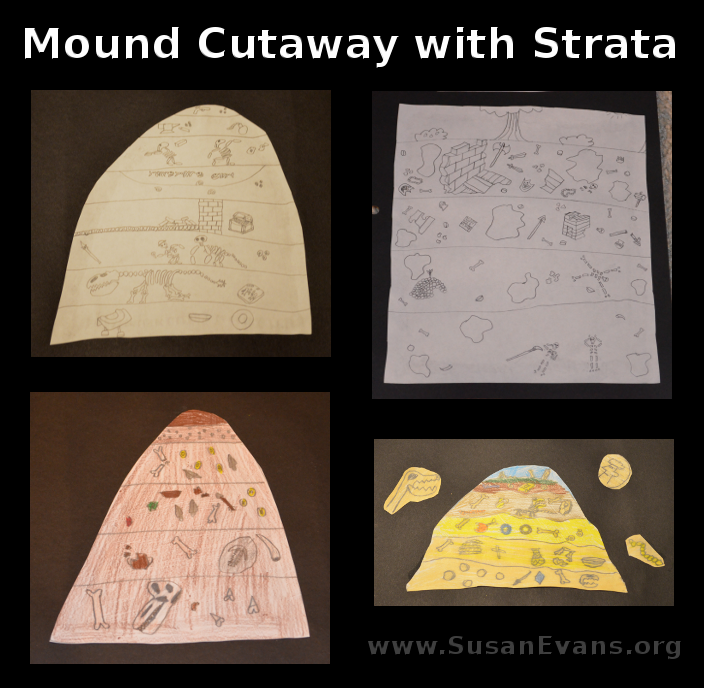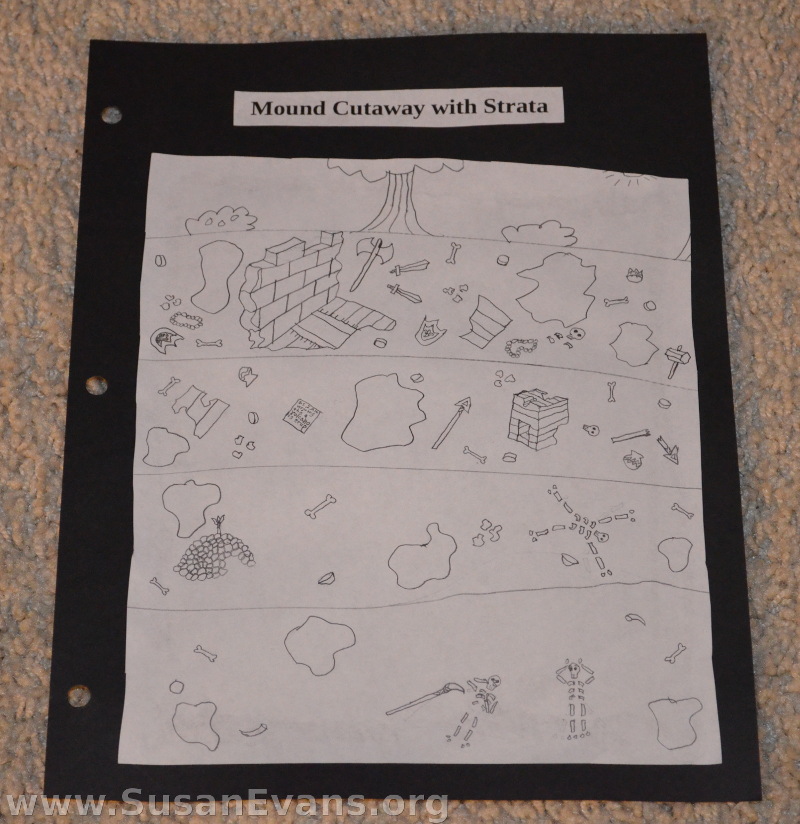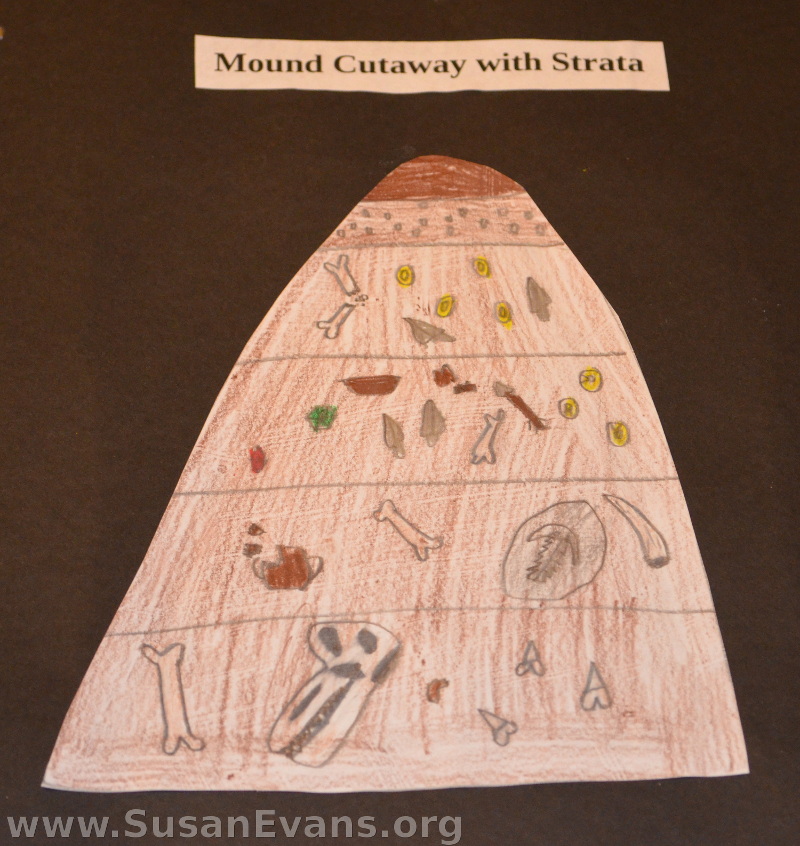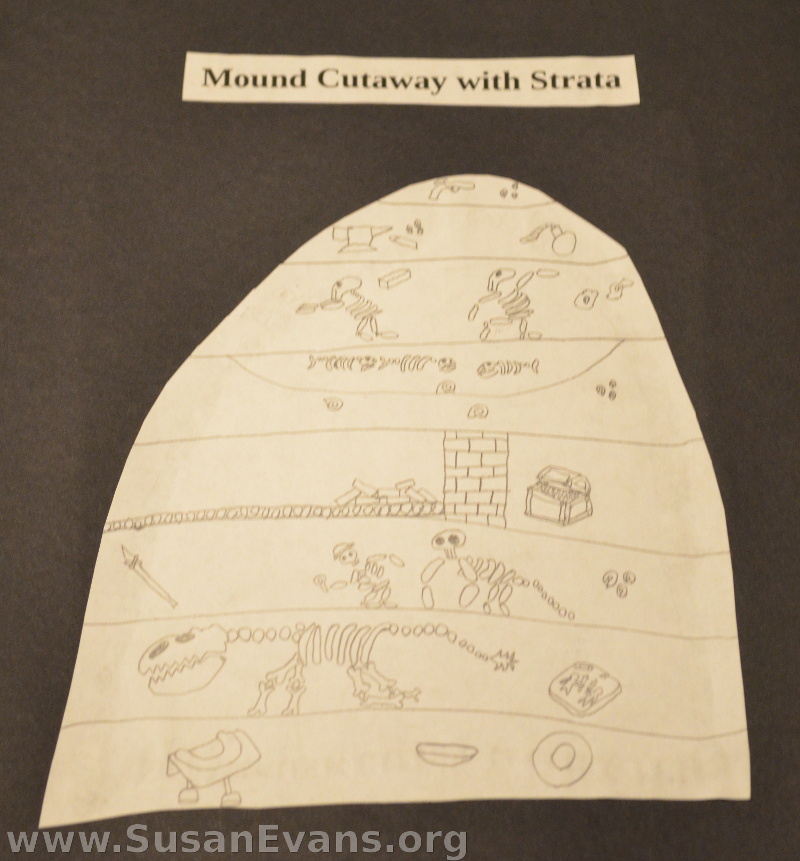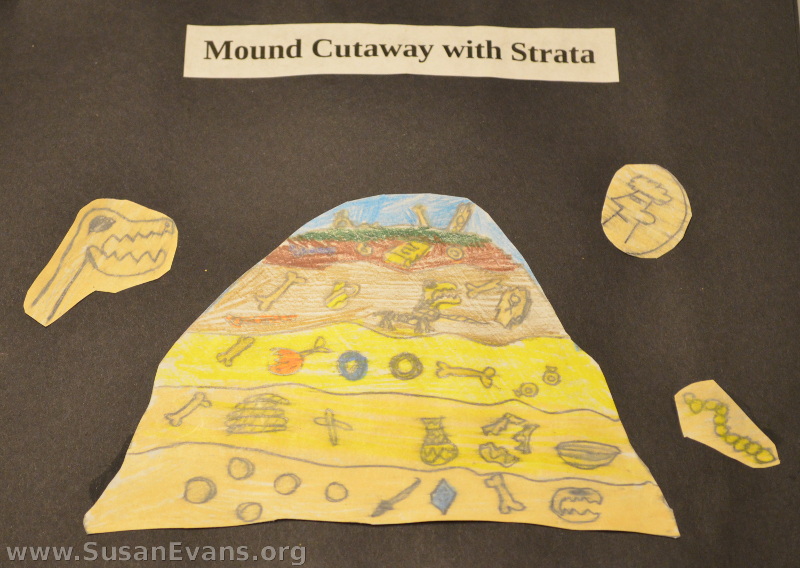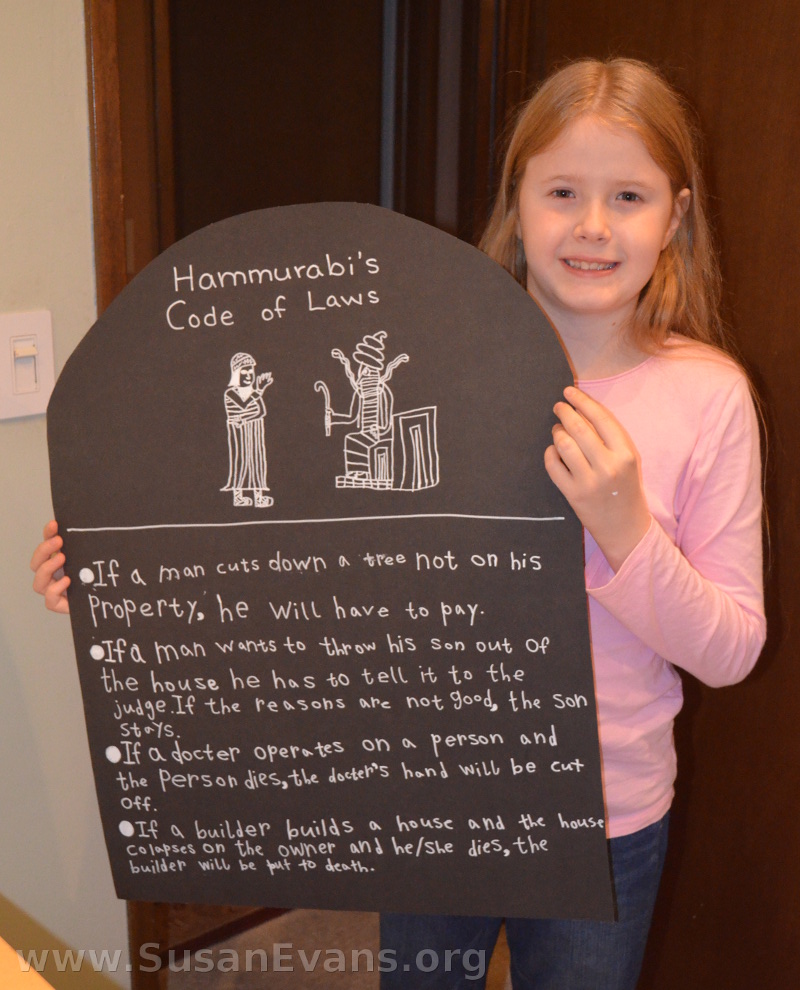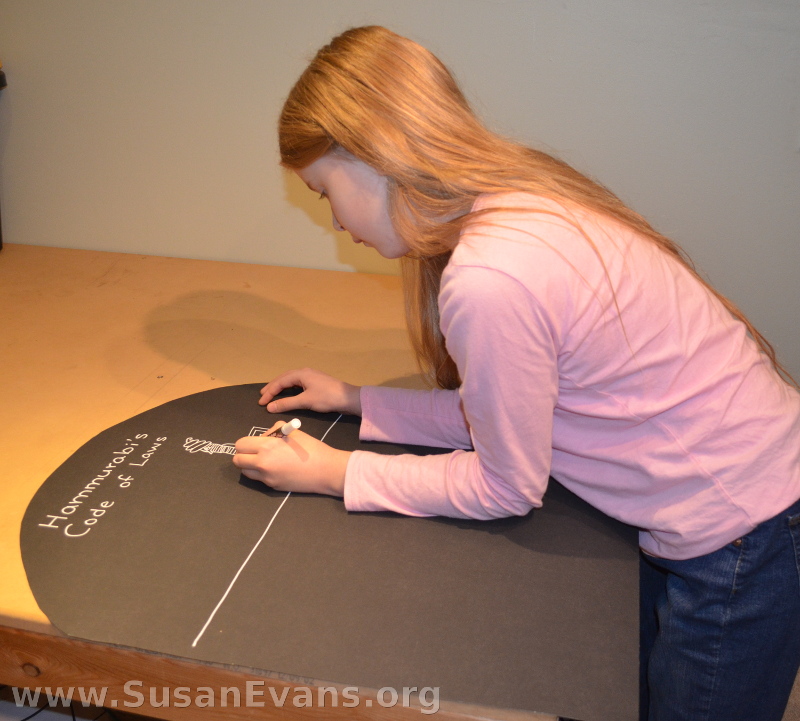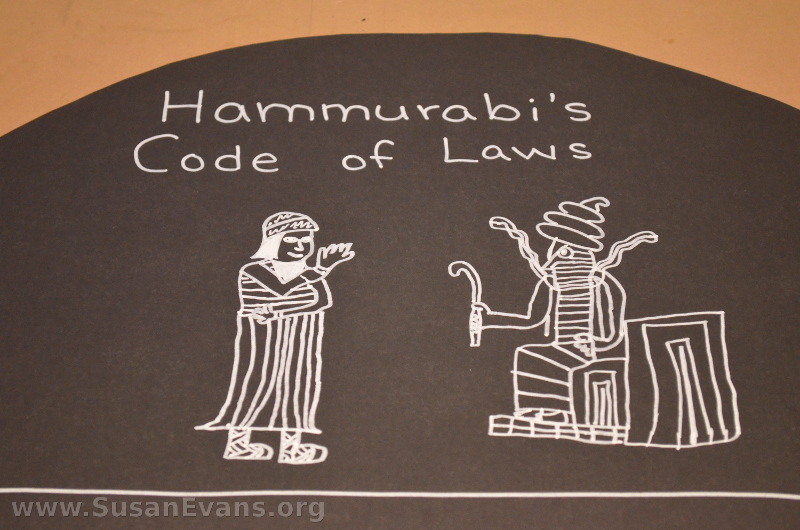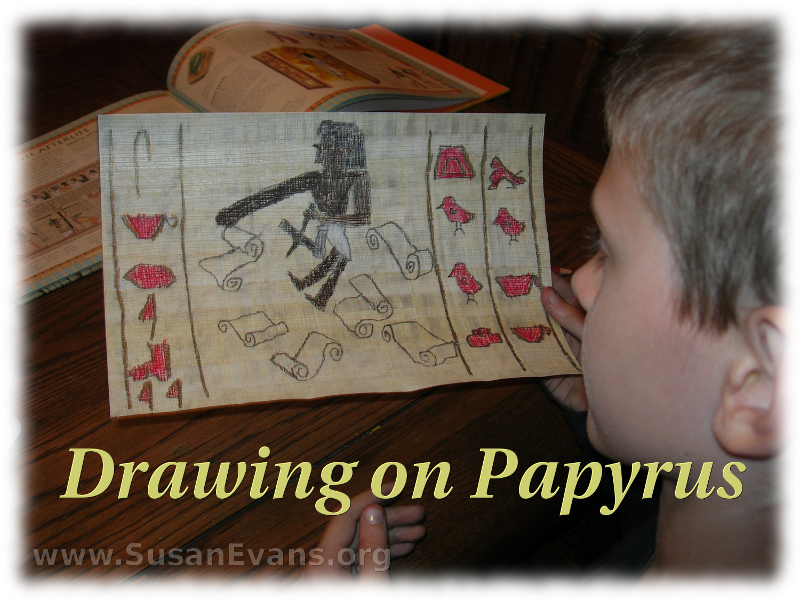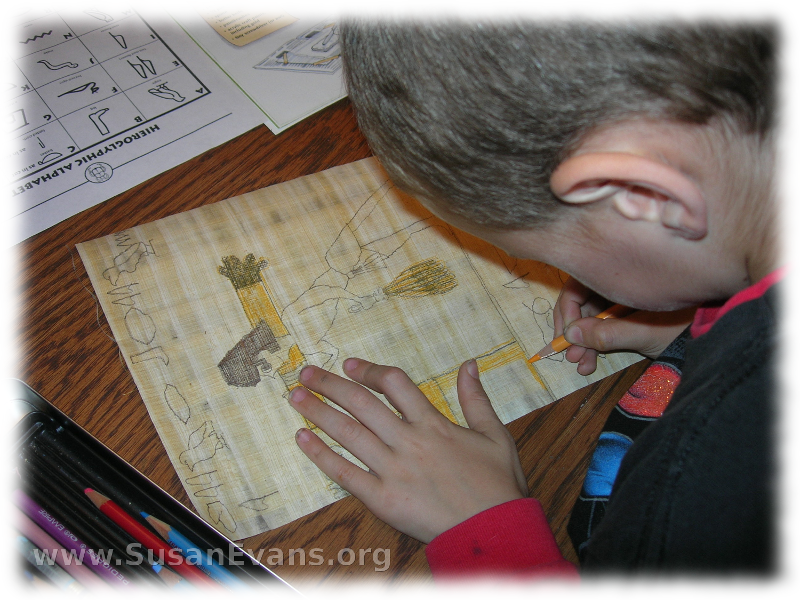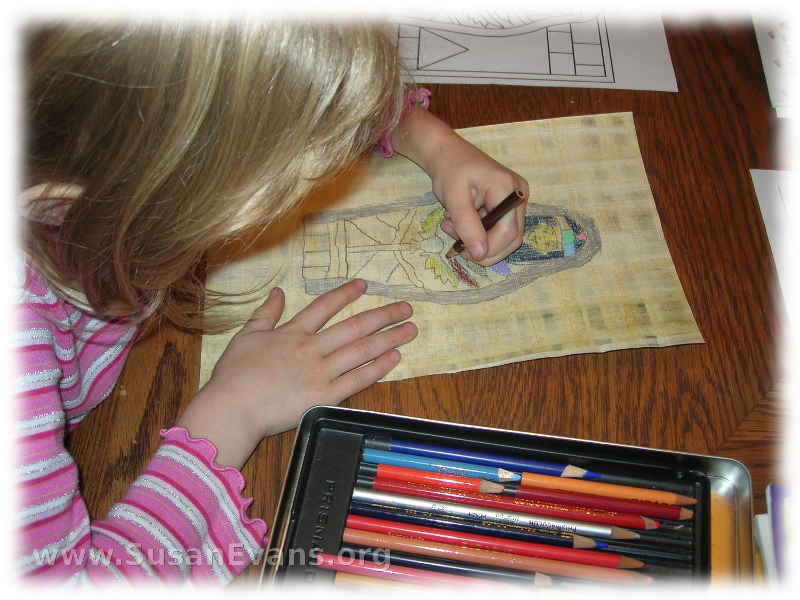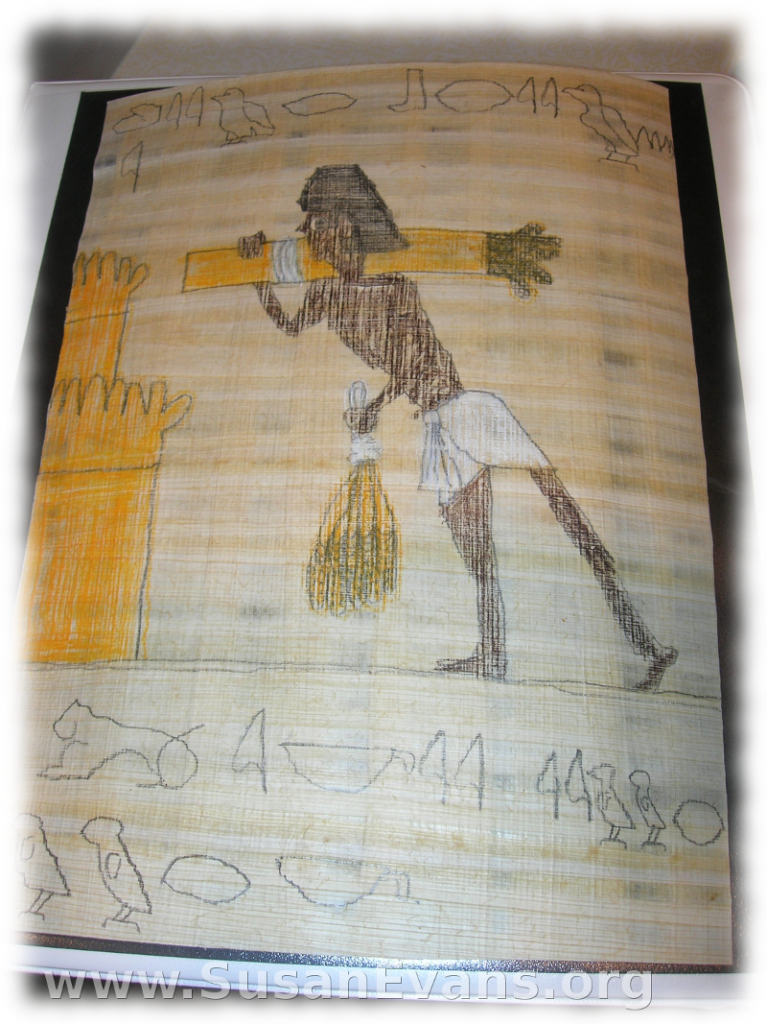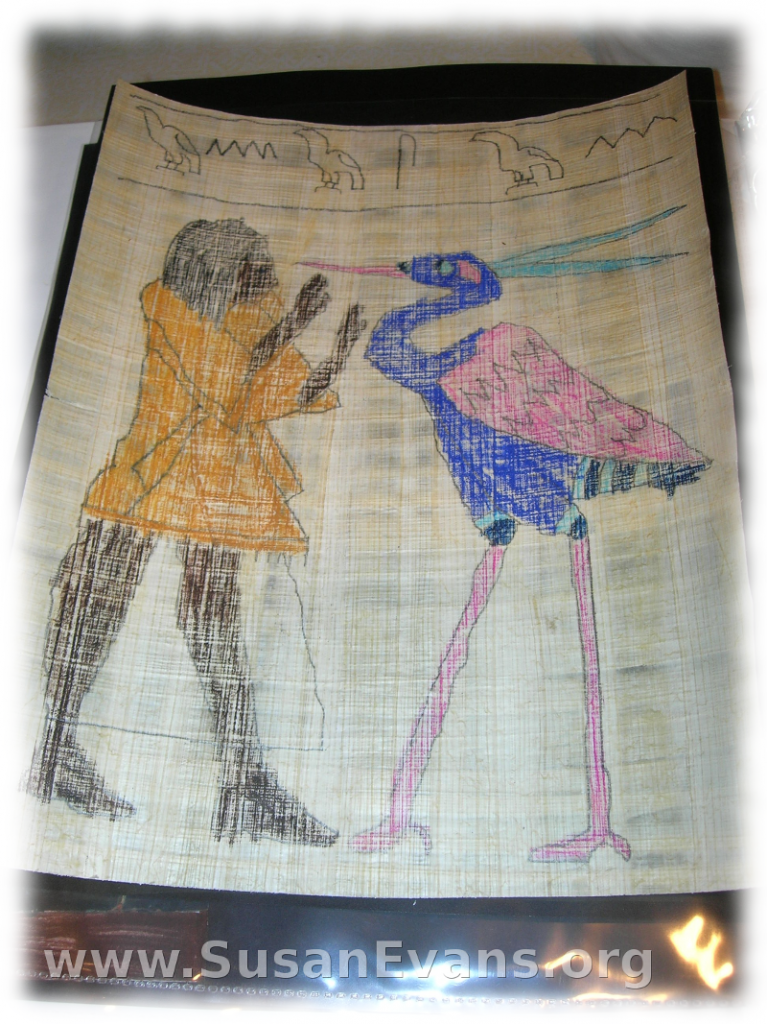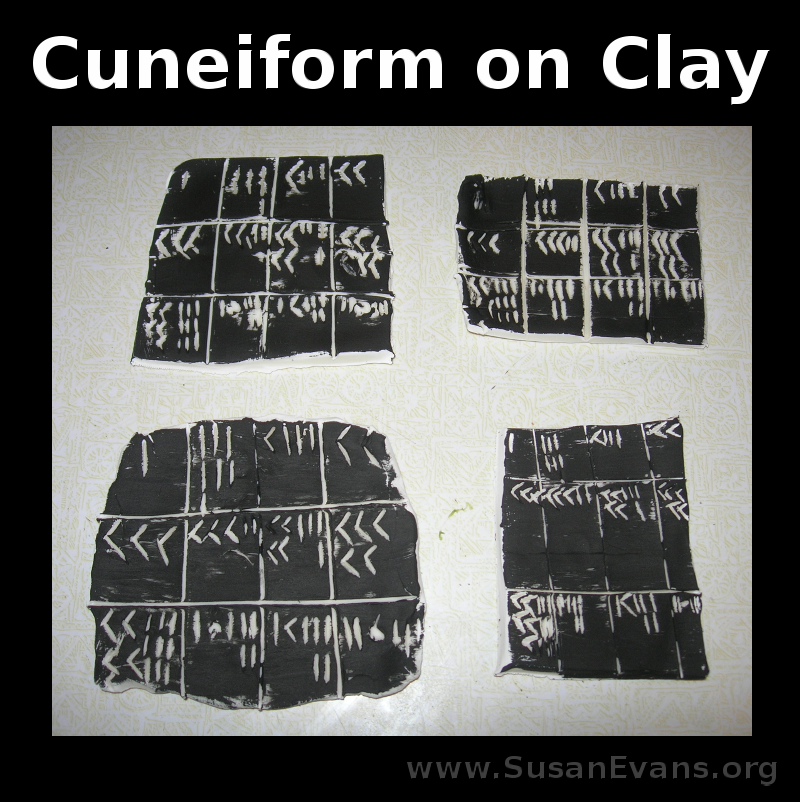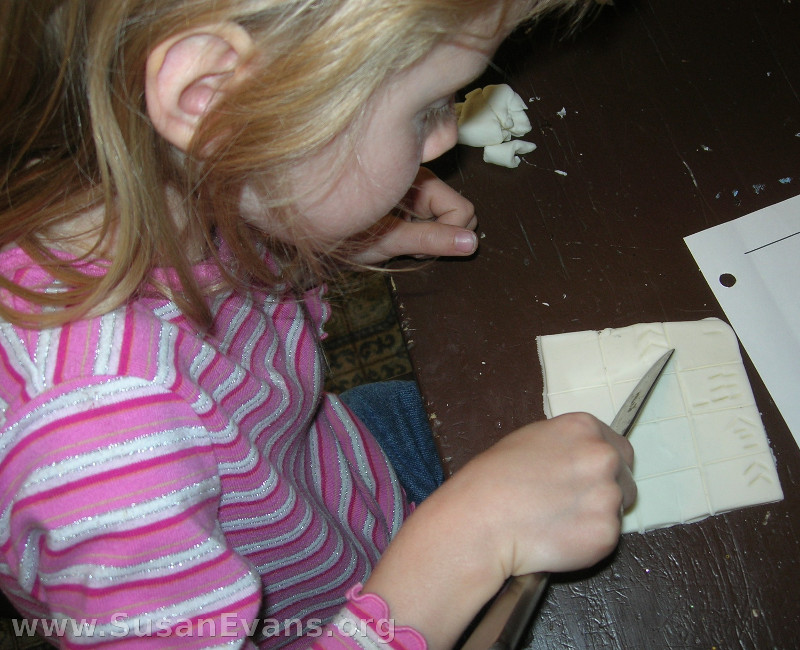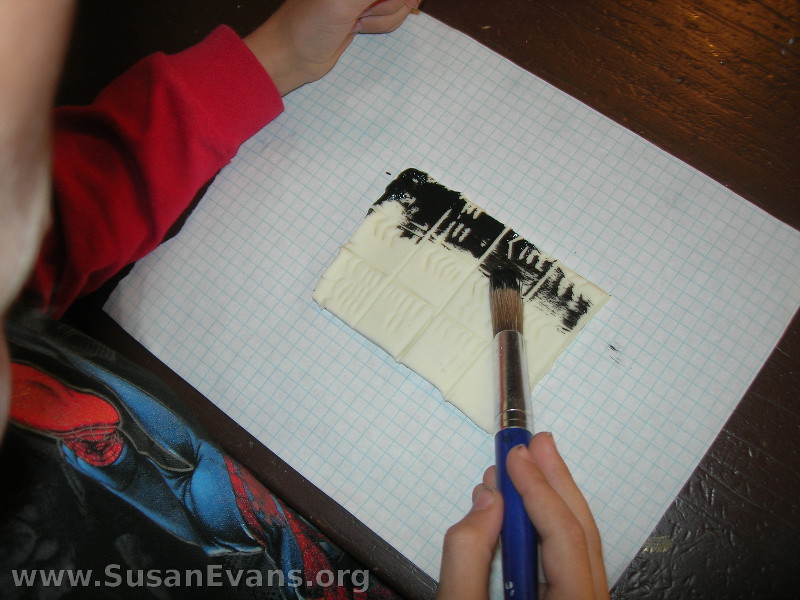When studying ancient history, you can start by having your kids draw a mound cutaway with strata. Talk about archaeology, and how each layer represents different periods of time that you can excavate to discover the artifacts or items that were used in each culture. Usually the older civilizations are on the bottom, with the newer civilizations on top.
Of course, floods and volcanic eruptions mess up this theory because lots of layers are laid down pretty fast, and all during the same time period. Answers in Genesis has found modern items in the lower levels of dirt.
Each of my kids created a drawing of a mound cutaway with strata:
As you can see, there are fossils of various kinds in the different layers. There are also remnants of houses, pottery, jewelry, and weapons. My son drew a tree and some bushes at the top of the picture.
This cutaway is more of a mound. Dirt is at the top, so you wouldn’t notice that there were hidden civilizations under your feet. Seashells are found in various layers, along with fossils and bones. A dinosaur head is down in the oldest layer.
These strata layers of rock are comical. The third layer from the bottom contains a man being chased by a dinosaur. Apparently a flood or volcanic eruption buried them rapidly so they are caught in the act. Once again, in a higher level of rocks, a man is throwing an object at another man, and somehow the flood waters buried both of them at the same time, freezing their actions for all eternity. An unfinished building is in one of the layers, along with buried pirate treasure.
My daughter drew some fun layers of strata that included bones, coins, pottery, jewelry, and weapons. She highlighted some of the archaeological finds by drawing enlarged pictures and gluing them to the black card stock paper for her history notebook.
The kids had fun deciding what to place in each of their layers of rock while drawing their mound cutaway with strata.
